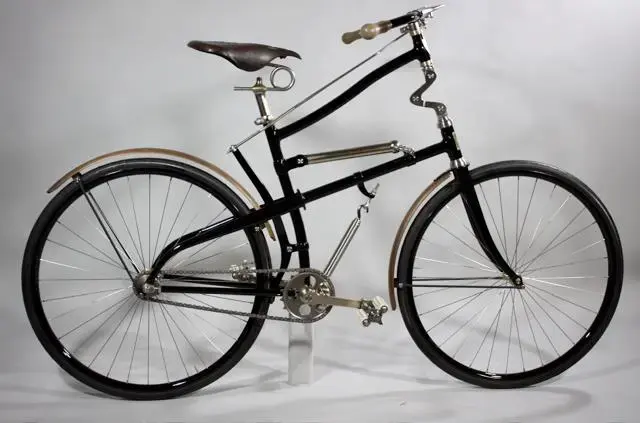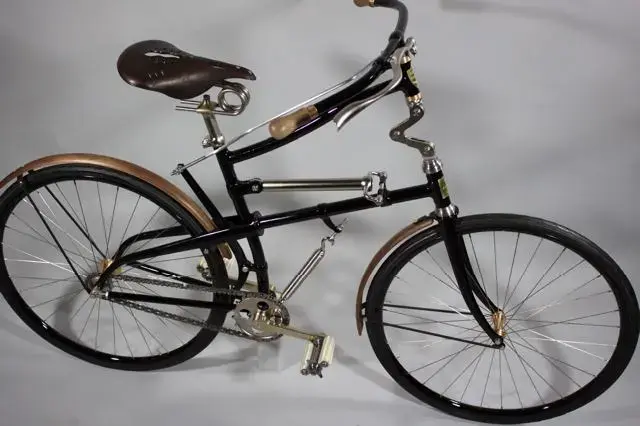You are using an out of date browser. It may not display this or other websites correctly.
You should upgrade or use an alternative browser.
You should upgrade or use an alternative browser.
Paul Brodie's Whippet
- Thread starter diditte911
- Start date
SIMONFREESE
Senior Retro Guru
- Feedback
- View
Would love to take that for a ride, it would surely raise a smile!
- Feedback
- View
dookie":39n0h7xy said:other than the sprung saddle is there any sort of suspension going on there, or is that all just design wonk? love the tire-scrubber rod brake.
Yes, in their day they were popular solid tyre suspension bikes. It was the invention of the pneumatic tyre that ended the manufacture of suspension bicycles like this. Perhaps history will repeat itself and Fat-bikes could supersede today's full suspension rigs?
May I say what a wonderful and authentic recreation this is, Paul should be very proud.
And Hamster, it does indeed remind me of some Cleland bicycles. Especially the Cleland inspired bikes made by David Wrath-Sharman, who made an even more sophisticated interconnected suspension bike.
Beware: Rant Alert!I have long held the view that today it is very difficult to think up alternative bike designs as designers can't easily forget the modern design solutions and instead design from first principles. It was much easier for the Victorian inventors to be creative and radical, as they had never before seen a suspension bicycle. The search is still on for revolutionary suspension systems but meanwhile the industry has settled on crude and in some instances inappropriate suspension solutions copied from motorbikes.
This suspension system is truly a marvelous piece of engineering. In my opinion it should be structurally updated, pneumatic tyres added, and could make a very comfortable modern suspended roadbike. Maybe even a racing bike?
How Does the Suspension Work?
It's a variation of a Watt's Link linear motion linkage.
http://www.mechanisms101.com/watts.html
The wheels and lower frame are un-suspended but the pedals, seat and handle bars are suspended from a single spring that can be seen joining the downtube to the bottom bracket. All the suspended parts are connected to the seat tube which is acting as the central vertical strut of the Watt linkage. In practice this means that the suspension is non-independent and interconnected. This has its advantages. The suspension cannot dive in reaction to braking forces nor squat in reaction to pedaling force. However the non-independence means that both wheels will rise and fall together, even if only one of them has hit a bump. This is the same principle used on the Dave Smart Interactive suspension system that was poorly copied by Muddy Fox on their Interactive model.
http://www.retrobike.co.uk/forum/viewtopic.php?t=48962
- Feedback
- View
Here is a video of another high precision Whippet reconstruction that shows how the suspension moves.
Note that the wheels are constrained so that they have to move up and down together.
http://www.youtube.com/watch?v=S5FFchg_OQM
Note that the wheels are constrained so that they have to move up and down together.
http://www.youtube.com/watch?v=S5FFchg_OQM
Similar threads
- Replies
- 4
- Views
- 226

